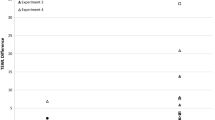Abstract
Objectives: The increased use of glycol ethers (GEs) for water-based paints and cleaning products, combined with a lack of information about many of these products, particularly with regard to the effects of percutaneous exposure, led us to evaluate the skin absorption rates of a group of glycol ethers in vitro. Methods: Skin permeation was calculated using the Franz cell method with human skin. A physiological solution was used as the receiving phase. The amount of solvent passing through the skin was analysed with a gas chromatographic technique employing flame ionization detection. A permeation profile was obtained and steady state, lag time and permeation constant flux was calculated for each of the following solvents: ethylene glycol monoethyl ether (EGMEE), propylene glycol mono-methyl ether (PGMME); propylene glycol mono-methyl ether acetate (PGMMEac); 2-propylene glycol 1-butyl ether (2PG1BE), ethylene glycol dimethyl ether (EGDME), ethylene glycol diethyl ether (EGDEE) and diethylene glycol dimethyl ether (DEGDME). All solvents were tested in their pure form and with 70% acetone. Results: For all solvents tested the lag time was less than 2 h, and for the majority of them was about 60 min. Flux at steady state ranged between 0.017 ± 0.005 and 3.435 ± 1.897 mg/cm2/h and permeation rate was from 0.0192 to 1.02 × 10−3 cm/h. The presence of acetone in the solution caused a reduction in lag time and an increase in permeation rate, higher for EGMEE, lower for EGDEE, indicating the enhancing effect of this mixture of solvents. Conclusions: Our results confirm the high percutaneous absorption of the GEs tested. The Franz method might be helpful for obtaining a grading of skin notation for hydrophilic substances: in the case of glycol ethers, it can give us precise information about permeation risk, particularly important in the evaluation of exposure. In the case of solvents with high dermal absorption, the air concentration is no longer a sufficient measure of the total exposure to workers, and therefore merely respecting threshold limit values (TLVs) in the air is not necessarily enough to protect them.
Similar content being viewed by others
Author information
Authors and Affiliations
Additional information
Received: 16 June 1998 / Accepted: 9 May 1999
Rights and permissions
About this article
Cite this article
Larese Filon, F., Fiorito, A., Adami, G. et al. Skin absorption in vitro of glycol ethers. Int Arch Occup Environ Health 72, 480–484 (1999). https://doi.org/10.1007/s004200050402
Issue Date:
DOI: https://doi.org/10.1007/s004200050402




